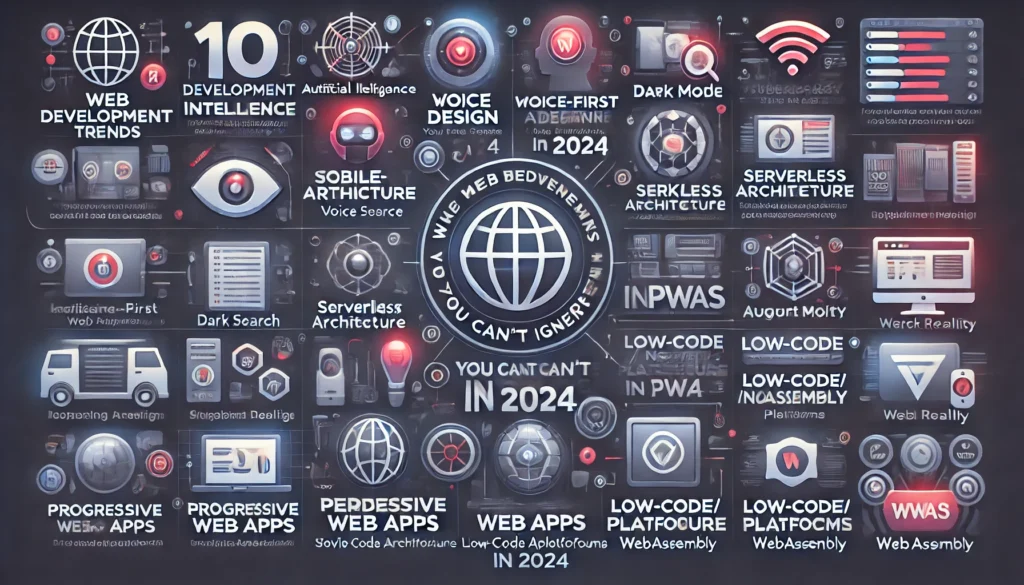Reach Out to Masteredge Get in Touch with Our IT Experts
We Are Here Always

Web development is constantly evolving, with new trends and technologies shaping the way websites are built and how users interact with them. Staying on top of these trends is essential for developers, businesses, and anyone aiming to maintain a competitive edge in the digital landscape. Below, we’ll explore the 10 web development trends you can’t ignore in 2024, breaking down why each trend is important and how it could impact the future of website development.
Progressive Web Apps (PWAs) continue to grow in popularity, offering a seamless blend of the best web and mobile app experiences. PWAs are websites that behave like native mobile apps, providing offline functionality, fast load times, and engaging user interfaces. As businesses seek cost-effective ways to create apps, PWAs are expected to dominate in 2024.
Artificial Intelligence (AI) is revolutionizing customer service, and AI-powered chatbots are becoming a crucial part of web development. These bots provide real-time support, guiding users through websites, answering FAQs, and even assisting with e-commerce transactions.
With the rise of voice-activated devices like Amazon’s Alexa, Google Assistant, and Apple’s Siri, optimizing websites for voice search is critical. By 2024, more users will rely on voice search to find information, making it vital for developers to integrate this feature into website designs.
Serverless computing, offered by platforms like AWS Lambda and Google Cloud Functions, allows developers to build and run applications without having to manage servers. This model allows for faster deployment, reduced costs, and improved scalability.
Single-Page Applications (SPAs) offer a more fluid, app-like user experience. Unlike traditional websites, which load new pages from the server, SPAs dynamically update content within the same page, reducing load times and improving performance.
Dark mode has become a highly requested feature, offering a visually appealing and energy-saving alternative to traditional light modes. This trend is set to continue growing as users prefer apps and websites that support dark mode.
Motion UI is an emerging trend that incorporates animation and dynamic transitions to enhance user engagement. By using subtle animations, scroll-triggered effects, and transitions, websites can deliver a more interactive and engaging experience.
Low-code and no-code development platforms are democratizing web development by allowing people with little to no coding experience to create websites and applications. These platforms offer drag-and-drop interfaces that simplify the development process.
WebAssembly (Wasm) is a binary instruction format that enables high-performance applications to run in web browsers. Wasm allows developers to build more powerful web applications that were traditionally only possible with native apps.
With growing concerns over data breaches and online privacy, cybersecurity has become a non-negotiable aspect of web development. In 2024, enhanced security features like multi-factor authentication (MFA), encrypted communications, and secure coding practices will be more critical than ever.
The web development landscape in 2024 is set to be more exciting and fast-paced than ever before, driven by advancements in AI, serverless technologies, cybersecurity, and new development frameworks. By embracing these trends, developers can stay ahead of the curve, create more efficient and dynamic websites, and deliver improved user experiences that drive business success.
Incorporating these trends into your web development strategy will help ensure your website is future-proof, scalable, and ready to meet the demands of modern users.
Reach Out to Masteredge Get in Touch with Our IT Experts
We Are Here Always